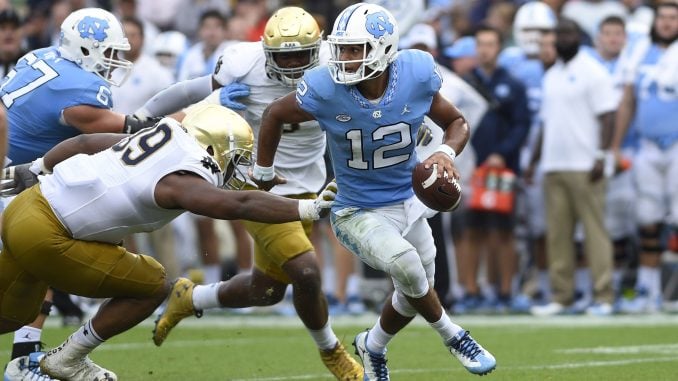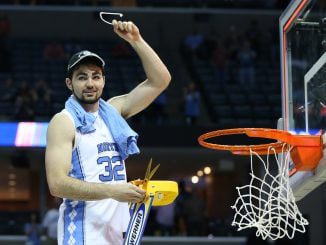
CB Corey Bell Jr.; LB Ayden Bonilla; TB Antwuan Branch; LB Cayson Collins; S Jesse Cuccia; OL Luke Elder; S D.J. Ford; WR Rontavius Groves; OL Tommy Hatton; LB Cole Holcomb; WR Thomas Jackson; S Donnie Miles; WR Devin Perry; DL Tyler Powell; TB Jacob Schmidt; LB Andre Smith; OT William Sweet; TB Stanton Truitt; TE Carl Tucker; TE Noah Turner
No, that’s not North Carolina’s depth chart from its final football game of the 2017 season, on Nov. 24 against rival NC State. It’s actually the list of injured players, many of them starters, that were listed as “out for the season” and didn’t play.
It’s also a contributing factor to the Tar Heels’ dismal 3-9 record.
But if there’s a silver lining to the dark cloud that hung over coach Larry Fedora’s team this season, it’s that the historic rate of attrition could end up benefitting UNC’s ability to quickly turn things back around.
Because of the experience gained by all the youngsters that were pressed into service before they were ready in 2017, the Tar Heels have been selected by the North State Journal staff as the leading candidate for Comeback “Player” of the Year honors in 2018.
“You can look at it two ways,” said sophomore quarterback Nathan Elliott, who started the final three games, throwing for 925 yards and 10 touchdowns with five interceptions.
“Obviously, it’s very frustrating to not be winning as many games as you want to win. Another way is that it gave a lot of guys opportunities this year, a lot of younger guys who were given forced reps, which I think is going to pay off in the end.”
That’s especially true at the most important position on the field.
Unlike last year, when UNC got caught without an experienced quarterback on its roster after the earlier-than-expected departure of Mitch Trubisky, the Tar Heels now have two from which to choose as they head into this offseason.
Before Elliott got his chance, freshman Chazz Surratt played in nine games — with seven starts — completing 58 percent of his passes for 1,342 yards, eight touchdowns and four interceptions. He rushed for 210 yards and five scores, but he also took a large number of hits and suffered at least one concussion.
He and Elliott figure to go into spring practice neck-and-neck for the starting job in 2018.
Other young players that emerged under difficult circumstances include: freshman running back Michael Carter, who averaged 5.8 yards per carry and led the team in rushing touchdowns with eight; sophomore wide receiver Anthony Ratliff-Williams, who developed into a versatile weapon on both ends of the passing game and special teams; ball-hawking freshman safety Myles Wolfolk, who recorded 32 tackles and two interceptions; and athletic offensive lineman Jay Jay McCargo.
Their performances under game conditions will go a long way toward helping Fedora determine where his program stands and what it needs to do to get back on a winning course.
“We’ll go back and evaluate everything, everything that we do in this program,” Fedora said. “We never stop doing that. We’ll try to tweak things to make them better. Hopefully, we’re going to get a bunch of guys healed up and then we’ll be ready to go.”


